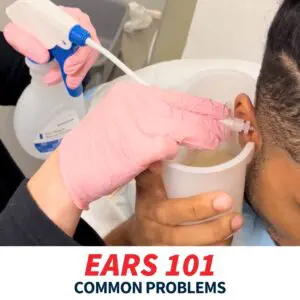Summertime means sunshine, barbecues, and splashing in the pool or lake. But lingering water in the ear canal can lead to a painful condition known as swimmer’s ear. Learn how to prevent it so you can stay safe and enjoy your time in the water.
What Is Swimmer’s Ear?
Swimmer’s ear (otitis externa) is an infection of the outer ear canal caused by trapped water, which creates a moist environment where bacteria and fungi can grow. It’s not contagious but can become quite painful if left untreated.
Common symptoms include:
- Itchiness and redness around the ear
- Pain that worsens when the ear is touched or pulled
- Drainage or a feeling of fullness in the ear
Even small scratches from cotton swabs or fingernails can increase the risk by damaging the delicate skin inside the ear canal.
Swimmer’s Ear vs. Middle Ear Infections
It’s easy to confuse swimmer’s ear with a middle ear infection (otitis media), but they are different:
- Swimmer’s ear affects the outer ear canal, usually after swimming.
- Middle ear infections affect the area behind the eardrum and are often caused by colds or allergies. These may include symptoms like fever, ear pressure, or hearing issues.
Earwax can play a role in outer ear infections as it would trap water in the canal and/or cause irritation to the canal itself. It doesn’t impact an inner ear infection as long as the ear drum is not ruptured.
How to Prevent Swimmer’s Ear
You can reduce your risk with a few simple habits:
- Dry your ears after swimming or bathing: Tilt your head to each side and gently tug the earlobe to help water drain.
- Use a hair dryer: On the lowest setting, hold it at least a foot from your ear to circulate air and dry the canal.
- Try drying drops: Over-the-counter or homemade (equal parts white vinegar and rubbing alcohol) drops can prevent bacterial growth.
- Avoid irritants: Don’t insert Q-tips or other objects in your ears—they can cause damage or push water deeper.
- Wear protective gear: Silicone earplugs and swimming caps with ear coverage help keep water out, especially in lakes or pools with questionable water quality.
Post-Swim Ear Care Tips
After swimming, practice simple DIY ear care:
- Drain and pat dry: Tilt your head and let water drain naturally. Use a soft towel to gently dry the outer ear.
- Avoid swabs and cotton balls: These can push moisture or wax deeper.
- Use drops if needed: A few drops of a vinegar-alcohol solution can help dry the canal.
- Be mindful with earwax: Overusing wax removal products can make things worse.
When to See a Provider
If you or your child experiences persistent ear pain, itching, or drainage, visit your nearest Midwest Express Clinic for fast, expert care. Our providers will perform a detailed ear exam and recommend a treatment plan, which may include prescription ear drops, antibiotics, or at-home remedies like warm compresses and OTC pain relievers.
With convenient hours and walk-in availability, Midwest Express Clinic makes it easy to get care and get back to your summer fun. Find your nearest clinic at midwestexpressclinic.com/locations.




